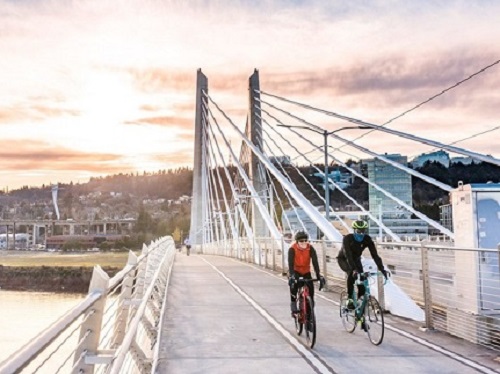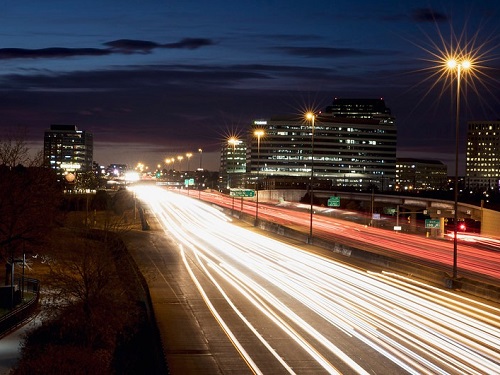The Oregon Department of Transportation recently unveiled a website that tracks how the state’s public agencies are collectively reducing greenhouse gas or GHG emissions across Oregon.
[Above photo by the Oregon DOT]
The Oregon Transportation Emission website pulls together regulations, programs, funding, goals, and partnerships into one place, then rates progress across six transportation categories toward the state’s goal of reducing GHG emissions from the transportation sector to 80 percent below 1990 levels by 2050. Currently, Oregon is on track to reduce GHG emission to 60 percent below 1990 levels by 2050, according to Oregon DOT.
Overall in Oregon, emissions from transportation represent 35 percent of total statewide GHG emissions, according to the latest state data.
“Our objectives are to support reductions in how far and how often people drive, and for each mile driven to be clean,” noted Amanda Pietz, administrator for the agency’s policy, data, and analysis division, in a statement. “Overall, we’re doing well to reach our 2050 goals, and we have plans to improve in some areas to get us all the way there.”
The website was created by Oregon DOT in partnership with the Oregon Department of Environmental Quality, the Oregon Department of Energy, and the Oregon Department of Land Conservation and Development. It is based on the Statewide Transportation Strategy: a 2050 Vision for Greenhouse Gas Emissions Reduction, and progress is tracked against many of the strategy’s goals.
The Oregon DOT noted that recent state regulations governing GHG emissions from cars, trucks, and sport utility vehicles or SUVs — alongside a shift to electric vehicles or EVs — should yield the “biggest reduction” in such emissions in the coming decades.
Meanwhile, areas with the “most room for improvement” where GHGs are concerned are reducing vehicle miles traveled — how far and how often people drive — as well as reducing GHG emissions from larger trucks and transit vehicles. The Oregon DOT said “progress can be made” in those areas via investing in active modes like walking, rolling and biking; improving transit services; pricing the transportation system; and enacting land use policies to support shorter trips.
States and localities are engaged in similar emission reduction activities across the country as outlined in a knowledge session held during the American Association of State Highway and Transportation Officials 2023 Washington Briefing, held February 28 through March 3 in Washington, D.C.
Concurrently, at the federal level, the U.S. Departments of Energy, Transportation, Housing and Urban Development, and Environmental Protection Agency signed a memorandum of understanding or MOU in September 2022 to reduce GHG emissions associated with the transportation sector while concurrently ensuring “resilient and accessible mobility options” for all Americans.


